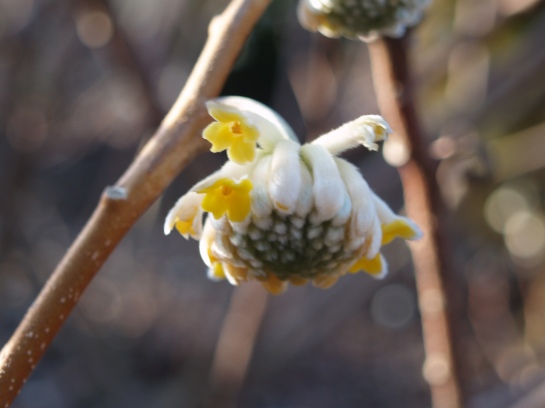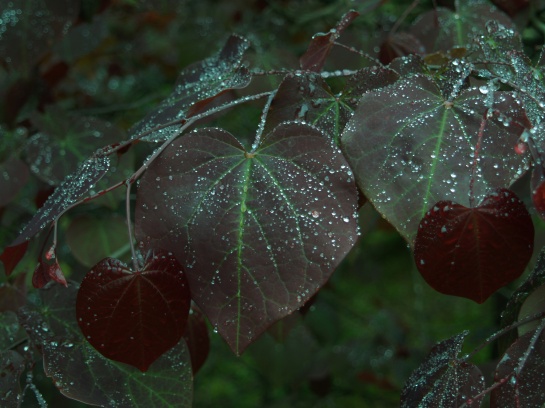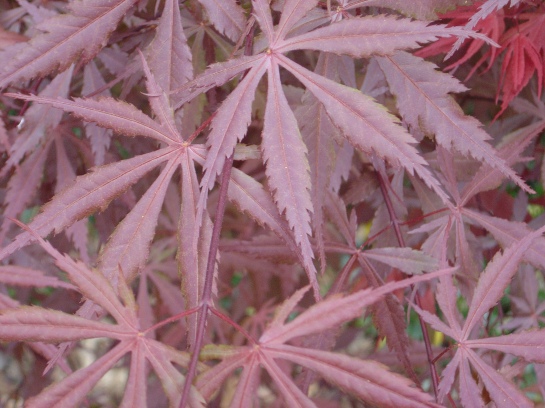There is a need for caution in planning for spring additions to the garden in the winter months. Certainly, this is an ideal time for contemplation, but the analysis of existing plantings can be made more difficult by the absence of foliage. I understand the argument that this is the proper time to see the “bones” of the garden, so as not to be distracted by foliage and flowers, but too often the branching of plants gives a false impression that there is more space than there really is.
I’m repeatedly fooled by this, but also by perennials that melt in the cold to leave open spaces that the gardener feels compelled to fill. At least, I am, and you would think that after fiddling with this garden for more than twenty years I’d have learned a lesson or two. Which, I probably have, but still I find myself considering the addition of dozens of shrubs and perennials that there is probably too little space for.
Many of the plants in my garden have grown past the ten year growth that references often refer to, and to the twenty year size that is not so often admitted. Of course, most frequently gardeners discount mature size projections by excusing that they will have moved on to another garden by the ten, and certainly by the twenty year mark, or even that they are likely to be dead and gone before plants are overgrown. Whether this is an acceptable reason for disregarding the mature size of plants is not my purpose, but at the least this should be a consideration in the planning stage.
Earlier in the winter an ice storm caused one of the huge swamp maples (Acer rubrum) that border the garden to crash down onto an aged ‘Forest Pansy’ redbud (Cercis canadensis ‘Forest Pansy’, above), so that both are in the process of being removed. The maple is one of many in the forest that borders the garden, but I find that I am considering small trees to replace the redbud. The reasoning is that the location was becoming too shaded for the redbud, but in the absence of the maple there will be adequate sunlight for a somewhat shade tolerant tree to flourish.
In fact, I suspect that my yearning to plant another tree in this area (that begs to be defined by a tree or shrub with some substance) is clouding my judgment, and the location will remain too shady. In this instance, there is adequate space for a small tree to grow, though if a shade tolerant tree is selected that will successfully grow to maturity, it will inevitably grow to touch a ‘Burgundy Lace’ Japanese maple (Acer palmatum ‘Burgundy Lace’, above) on one side and ‘Venus’ dogwood (Cornus x ‘KN30-8’, below) on the other. But, this is likely to be long after I’m dead and gone.
Lovely photos and I identify with much of what you said about the misleading “bones” of winter.
I got a chuckle out of your comments regarding “dead and gone”. I often want to cut down a tree to replace it with another more desirable one, but my wife always objects, saying that by the time my proposed tree matures and looks beautiful, we’ll both be dead and gone. Nevertheless, like children, I still enjoy watching them grow into beautiful adult forms. But I can’t convince her!
Don, I’ve learned that the margin for error is much shorter than I expected when I first began to garden. Though trees take a year or two to get their roots going before they really begin to grow, if they’re planted with the correct exposure and with decent soil they get going in a hurry. A few times I’ve looked at a tree after three or four years and thought “uh oh”, but at ten years it’s not turned out so bad after all. There are a few trees that I’ve planted that will be problems long after I’m gone, but even these should not be disastrous (and I’d plant them again tomorrow).
Hello Dave,
Just wanted to send out a grand hello to everyone… I can’t help to take notice of your endless passion on plant dialog regarding your epic garden treasures, which at times strike up a interesting conversation.
Thanks for all the in tel! Earl
Thanks for stopping by. I’m in New Orleans, but I’ll talk to you next week.